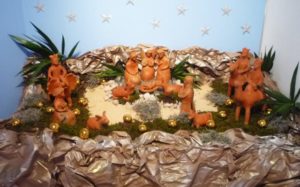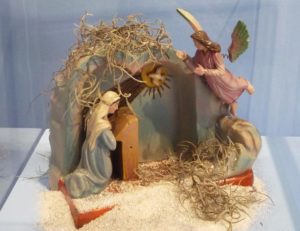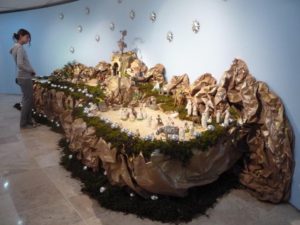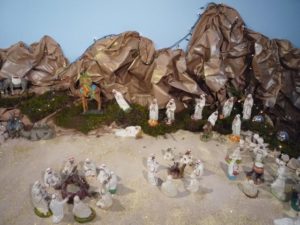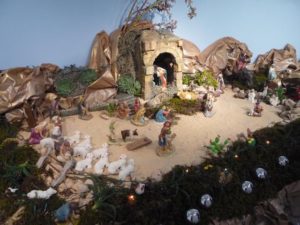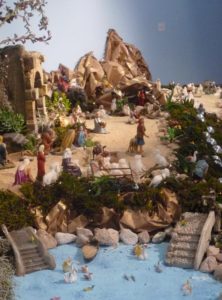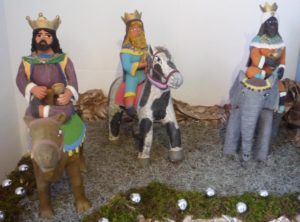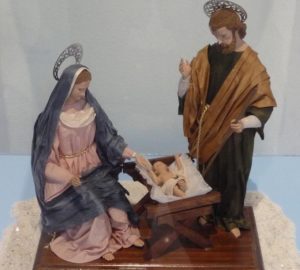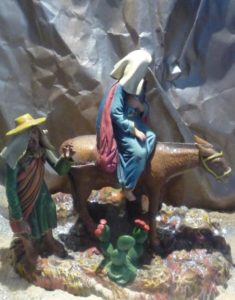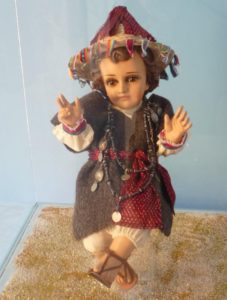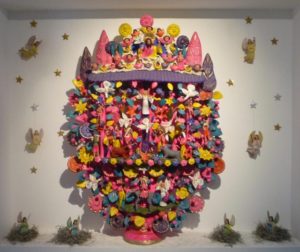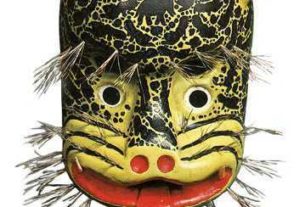Decorated evergreen trees, garlands of greens and ivy, yule logs, shiny glass balls, seasonal music, twinkling lights, special family meals, shimmering stars, brilliantly red poinsettias, silvery ribbons, mounds of presents, and Santa Claus are the vibrant heralds of the Christmas season in the United States and Canada.
Few North Americans recognize that the roots of these treasured “Christmas” traditions were active long before the birth of Christ. In fact, most evolved from pagan winter solstice rituals of the Celts, Druids, Scandinavians and indigenous groups, and the much older Jewish Festival of Lights.
Mexico’s Christmas traditions
While the most beloved Mexican Christmas traditions are firmly based on the birth of Christ, the timing of the celebration coincides with Mexico’s ancient worship of the sun. During the nine darkest days of winter, the Aztecs celebrated the God of the Sun, pleading for his return and praising both the Sun and his virgin mother goddess.
Posadas
Early priests obtained permission from Rome to hold special processions and masses for nine days before Christmas. Beginning December 16 village children dressed as Mary and Joseph still lead a group of “angels and shepherds” from house to house to commemorate the search for an inn (posada) in Bethlehem. They are curtly refused at every door until the entourage is welcomed at a prearranged home with a fiesta including music, food and piñatas.
Pastorelas
To begin teaching church lessons, the first priests acted out Biblical scenes. This tradition has continued through five centuries with Pastorelas, or shepherds’ plays still performed each year. The lines and details vary, the lines written in verse often embellished with actors’ ad-libbed quips. As the shepherds are excitedly traveling to the stable as directed by the angels; the Devil and his band waylay them. The slick-talking Satans offer liquor, gambling, wild living. Today it is common to see the Devil suggesting cigarettes, violence, war, drugs and sex in his vigorous attempts to delay the shepherds. Finally, the Archangel Michael triumphs over evil, slaying the Devil and the shepherds continue to the manger.
Nacimientos
The most beloved Christmas tradition in Mexico is the nacimiento, an elaborate arrangement of clay, wax, wood, metal, fabric and beaded figures depicting the birth of the Christ Child
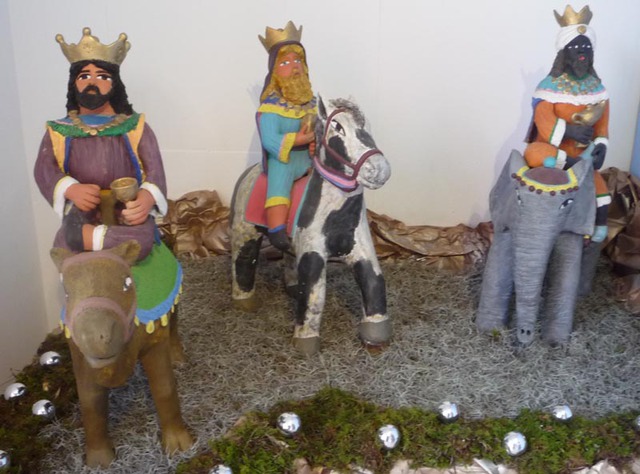
Called Crèches in France and Nativity scenes in England; today’s nacimientos or birthplaces were called Belens or Bethlehems well into the last century. Mexico’s scenes are very different from the 14-piece sets sold in north of the border malls and shops. Often an entire room of a home is needed to arrange and display the hundreds of pieces constituting a miniature village surrounding the stable with Mary and Joseph focused on the empty manger, awaiting the birth of the babe. In some areas, the baby’s appointed godparents rock the baby to sleep before placing the figure in the manger during a Christmas Eve party. Among the charming and unusual hand-made figures are women making tortillas, the infidels in Egypt, farmers milking cows, mothers nursing infants, vegetable and pottery merchants and a large variety of shepherds in various events of their day. Many families incorporate waterfalls, mountains and new figures each year, searching for new and amusing illustrations of daily life.
Some Nacimientos bend time a little to feature the Garden of Eden, St. John the Baptist, Herod’s shoulders destroying the innocent children, Jesus at the well with Mary Madalene, Mary at the base of the Cross, and other biblical scenes.
St. Francis of Assisi is credited with preparing the first nativity scene in an Italian cave in 1223. One of the most meaningful ways to experience Christmas eve in Ajijic is to view a number of nacimientos with the live participants and animals that ring the Atrium of the Church de San Andres on Marcos Castellanos at about 8 p.m. Each nacimiento is sponsored by a different neighborhood and represents a different country of the world or region of Mexico.
This article appears courtesy of the Chapala Review, a monthly Newspaper published in Ajijic, Jalisco, Mexico. The focus is the Lake Chapala area. The goal is to provide quality information about the area, its stories, events, history, culture and people.

